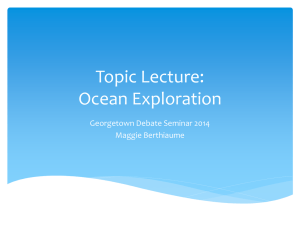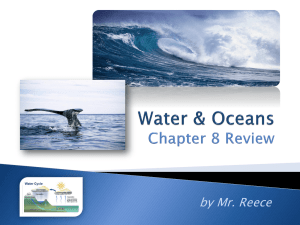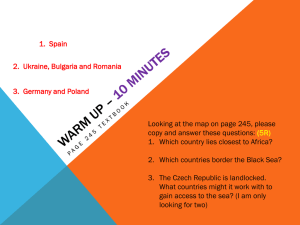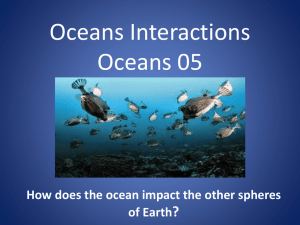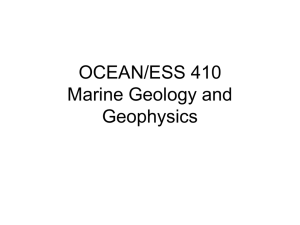14_1 The Vast World Ocean
advertisement
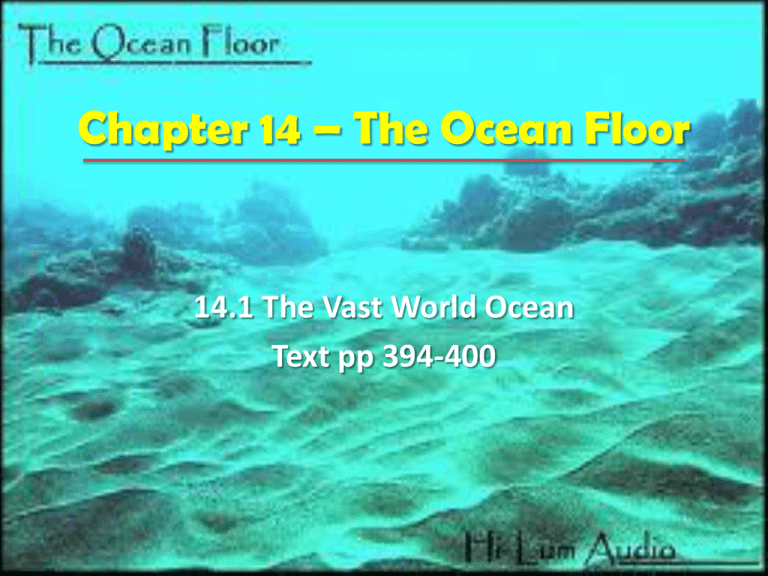
Chapter 14 – The Ocean Floor 14.1 The Vast World Ocean Text pp 394-400 The Blue Planet • Nearly 71% of Earth’s surface is covered by the global ocean. Oceanography is the science that studies the global ocean, and draws on geology, chemistry, physics and biology. Geography of the Oceans • About 360 million square kilometers, or 71%, of all the surface of Earth is represented by oceans and smaller seas, such as the Caribbean Sea. • The world ocean can be divided into four main ocean basins – the Pacific Ocean… •Largest ocean, and the largest single geographic feature on Earth. •Covers half the ocean surface. •World’s deepest ocean. • …the Atlantic Ocean… •Half the size of the Pacific Ocean. •Not quite as deep as the Pacific. •Relatively narrow in width. • … the Indian Ocean… •Slightly smaller than the Atlantic. •Just as deep as the Atlantic. •Located almost entirely in the Southern Hemisphere. • … and the Arctic Ocean. •About 7% the size of the Pacific Ocean •A little more than ¼ deep as the rest of the oceans. Mapping the Ocean Floor • The topography of the ocean floor is as diverse as that of the continents. • We would see volcanoes, tall mountain ranges and large submarine plateaus if we could see to the bottom. • Bathymetry (bathos = depth, metry = measurement) is the measurement of ocean depths and the charting of the shape or topography of the ocean floor. • Today’s technology – particularly sonar, satellites, and submersibles – allows scientists to study the ocean floor in a more efficient and precise manner than ever before. SONAR • SONAR stands for… • SOund • NAvigation and • Ranging SONAR works by transmitting sound waves toward the ocean bottom, and a receiver intercepts the echo reflected upwards. • Depth can be calculated from the speed of sound waves in water, and the time required from the energy pulse to reach the ocean floor and return. In this way a profile of the ocean floor is created. Satellites • Measuring the shape of the ocean floor from space is another recent technological breakthrough. Satellites can give us extremely accurate measurements, using microwaves instead of sound waves. Submersibles • A submersible is a small underwater craft used for deepsea research. Submersibles are used to collect data about areas of the ocean that were previously unreachable by humans. • Today, many submersibles are unmanned and operated remotely by computers. These remotely operated vehicles (ROVs) can remain under water for long periods.


